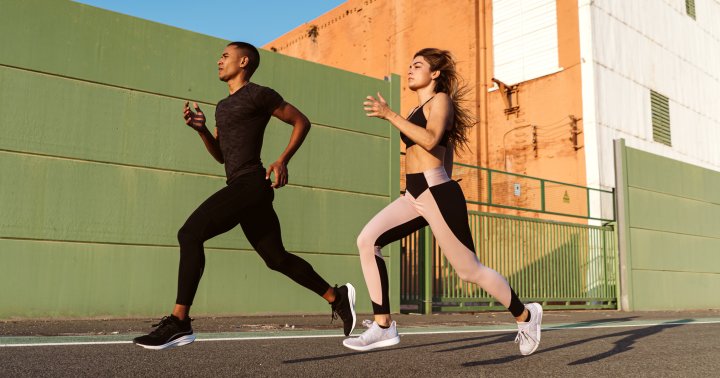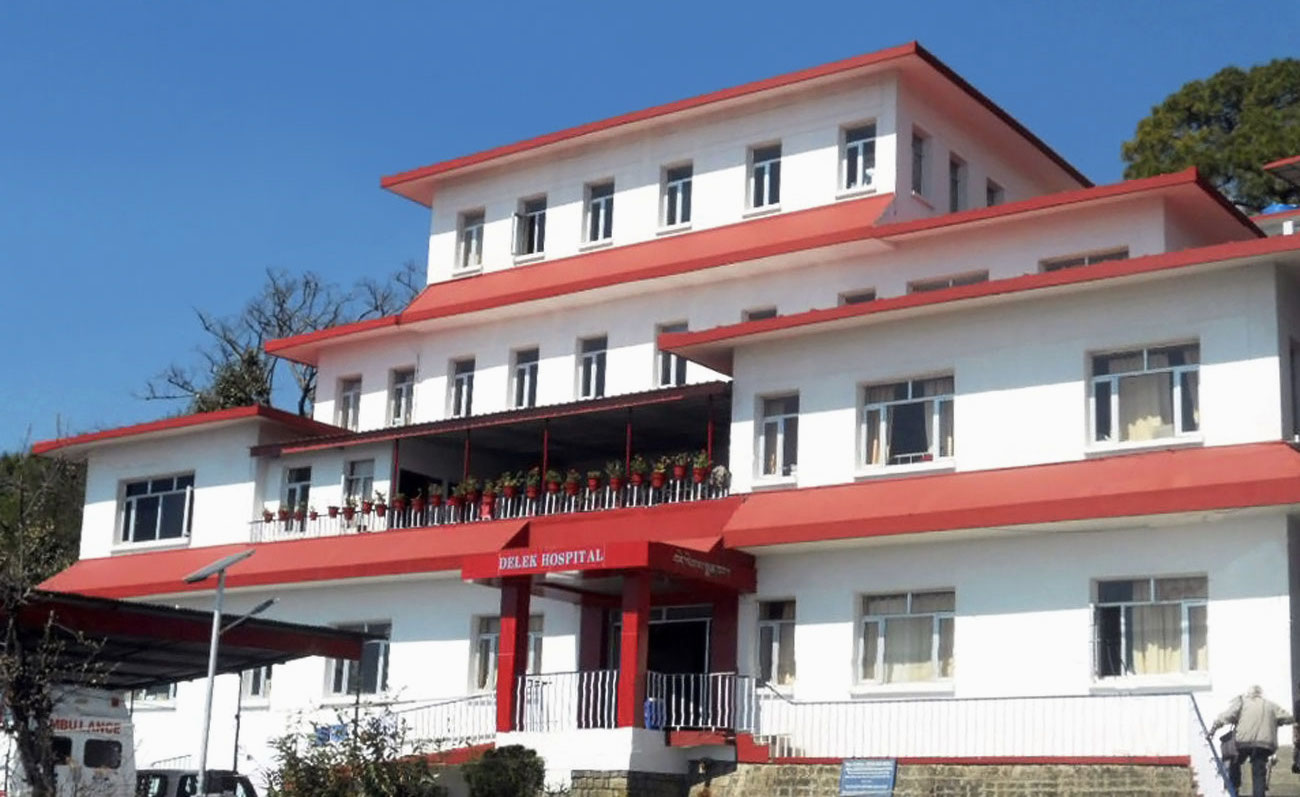Modify 9 Common Yoga Poses to Make Them More Accessible (Photo Tutorial)
Accessible yoga exists despite what social media may portray. In fact, since yoga is for every body, there are modifications that you can explore in most poses to make them more accessible for your body specifically. If you have...

Accessible yoga exists despite what social media may portray. In fact, since yoga is for every body, there are modifications that you can explore in most poses to make them more accessible for your body specifically.
If you have a body, then you can do yoga! Even common yoga poses can become more accessible, which is what we will explore in this yoga pose tutorial article. 🙂
Do Your Wrists Hurt In Yoga? Here’s How to Modify 5 Common Yoga Poses for Wrist Pain
Accessible Yoga – Here’s How to Modify 9 Common Yoga Poses:
Grab a couple of yoga blocks (or two books that are the same height), a blanket, and a chair to make these nine common yoga poses more accessible.
1. Child’s Pose (Balasana)

Child’s Pose is frequently used as the first pose in a yoga class and is often offered as a resting pose for students who want a break during class.
But Child’s Pose can cause pain in the knees and hips and is far from a resting pose for some.
Let’s make this common yoga pose an accessible yoga pose:
From a kneeling position place a block on the ground at its narrow width between your feet Stack two blocks together for more height if desired Spread your knees wider than your hips For even more support, place a folded blanket behind your knees Send your hips back to rest on the the blocks Reach your arms long in front of you, placing your hands face down on the mat Let your chest and stomach fall between your thighs Keep your upper body active by reaching long from your tailbone to your fingertips Rest your forehead on the floor or another block2. Cobra Pose (Bhujangasana)

Cobra Pose is a gentle backbend and chest opener. But the pose can cause a pinching sensation in the lower back for some yogis. Spreading the feet wide instead of keeping the toes together can help to alleviate this.
Let’s make this common yoga pose an accessible yoga pose:
Lay on your belly with your hands on each side of your chest Spread your feet wide to the sides of your mat Find a slight internal rotation of your legs so that the top of your thighs and feet are on the mat Press your legs and pubic bone firmly into the ground Activate your core by gently pulling your stomach and lower back in toward your spine Use the muscles in your back to lift your chest off the ground Find length in your spine by pulling yourself forward in addition to upward Your hands can stay on the ground, or you can come to your forearms if you experience hand or wrist pain, finding Sphinx Pose instead of Cobra3. Plank Pose (Phalakasana or Kumbhakasana)

Plank Pose is a full body strengthener that quickly warms the entire body. Injuries can occur in the hands, wrist, shoulders, or back if done incorrectly or if you hold longer than your body strength allows.
Let’s make this common yoga pose an accessible yoga pose:
Start in Table Top Pose Come to your forearms, placing your elbows under your shoulders to alleviate pressure on your hands and wrists Your forearms should be parallel to each other with your palms face down on the mat Walk your knees back one at a time until you find a straight line from your knees to the crown of your head Leave your toes curled under for a bit more support in the pose Lengthen along your front and back body and pull your muscles in toward your center Keep your head in line with your spine and your collarbones spreading wide Notice where your hips are – you want them to stay in line with your shoulders and knees rather than dropping down or lifting up
4 Common Mistakes In Plank Pose + How to Fix Them
4. Crescent Lunge (Anjaneyasana)

Crescent Lunge both strengthens and stretches the body. Targeted muscles include the quadriceps, hamstrings, hip flexors, glutes, calves, and shoulders. That’s a lot of work in one pose!
If you have tighter hips or shoulders, this pose might not feel great.
Let’s make this common yoga pose an accessible yoga pose:
From Down Dog, take a large step forward with your right foot, placing it between your hands Bend your left leg keeping your heel lifted and your toes pressing into the ground Use your core to help with balance, press into both feet, and lift your chest Keep your back leg bent, allowing for more stability in your hips Point your tailbone toward the ground to find neutral hips and remove any sway in your back Keep your arms shoulder-width apart, palms facing each other, and lift them toward the sky any amount Leave your arms in line with your chin rather than your ears to decrease tension across your shoulders Activate your core and lengthen through your spine This pose can also work as a replacement for Warrior 15. Triangle Pose (Trikonasana)

Triangle Pose challenges our balance while working on both strength and flexibility. It’s a foundational pose found in many yoga classes, but it can be challenging to feel stable in this pose.
Let’s make this common yoga pose an accessible yoga pose:
From Mountain Pose (Tadasana), separate your feet and place several blocks stacked together between them Leave your left foot where it is and take a big step to the side with your right foot Land with your feet wider than hip-width apart and your right foot at about a 45-degree angle Bring your hands to rest on your hips Tilt your pelvis by slightly lifting your right hip higher than your left Reach your left arm long toward the front of your mat to find length through your spine, and then bring it to rest on the blocks Leave your right hand where it is, or extend it toward the ceiling, keeping it in line with your shoulder Activate both legs by simultaneously pressing down into the ground with your feet while lightly pulling them toward each other Open through your chest by rotating your ribs up toward the ceiling Gaze down at the mat to help with balance Try it out on both sides6. Warrior 3 (Virabhadrasana III)

Warrior 3 is a deceptively challenging balance pose. Leaning forward while standing on one foot can throw off your stability, particularly if you have underlying vertigo issues, or even a head cold.
Let’s make this common yoga pose an accessible yoga pose:
Grab a chair and place it on the mat in front of you with the back of the chair facing you Return to Mountain Pose Reach forward and grab the the back of the chair with your hands Put a micro bend in your right leg and shift your weight into your right foot Lift your left foot off the mat and extend it long behind you Lean forward as you lift your back leg, trying to make a T shape with your body Keep your left foot flexed and drop your left hip down so that your hip bones are both parallel to the ground Leave your hands on the back of the chair, or walk your hands forward so that your forearms rest on the chair Press down, not forward, into the chair You can also place your left foot on a wall for even more support Keep your hips stacked over your right foot Lengthen through your spine and the sides of your body Gaze at the ground When you’er ready, try it out on the other side7. Eagle Pose (Garudasana)

Eagle Pose is another challenging balance posture. Sometimes yogis feel tied up with all the crossing and wrapping involved in this pose. The binds may not be accessible due to tightness, injury, or size.
Let’s make this common yoga pose an accessible yoga pose:
Start in Mountain Pose (Tadasana) Bend your knees and sit back like you’re sitting down into a chair Press firmly into your feet and squeeze your legs together Look down and see if you can see your toes – if you can’t, then shift your knees back slightly Tilt your pelvis so your tailbone is pointing down toward the ground Lengthen through your spine, activate your core, and try not to arch your back Bring your arms up, stacking them on top of each other and grab your shoulders with opposite hands Gaze at a fixed point directly ahead When you’re ready, switch to the other side
“Knit My Ribs?” 6 Often Confusing Yoga Cues Explained
8. Bridge Pose (Setu Bandhasana)

Bridge Pose strengthens the core and lower body while opening the chest and lengthening the spine. It’s often used as a preparatory pose for deeper backbends.
This pose can put lots of pressure on the knees, and some find that it pinches the lower back or causes pain in the neck and shoulders.
Let’s make this common yoga pose an accessible yoga pose:
Start laying on your back Bend your legs and place your feet on the floor hip-width apart with your feet parallel If this hurts your back, you can move your feet slightly wider or adjust your feet so they are at a more natural angle Keep your knees pointing up toward the sky Place one block between your thighs and squeeze the block to activate your legs Lift your hips and slide another block under your sacrum, allowing your weight to rest on the block Extend your arms and place them on the ground next to the block Lift your chin slightly to take tension out of your neck Gaze overhead toward the ceiling9. Happy Baby (Ananda Balasana)

Happy Baby provides a groin and hip stretch. If you have to flail to reach your feet, or you feel like your hips are about to explode in this pose, then you need a different approach.
Let’s make this common yoga pose an accessible yoga pose:
Start on your back Tuck your knees in toward your chest Broaden through your collar bones to help open your chest Rest your spine and head on the mat Keeping the bend in your legs, send your knees wide toward your shoulders Flex your feet and extend them up toward the ceiling Bring your arms down to the mat Bend your arms and rest your thighs on your hands Allow gravity to gently open your hips while supporting your legs with your hands
Need more accessible yoga modifications? Here’s How to Modify 7 Common Seated Yoga Poses With Props (Photo Tutorial)
Common Yoga Poses Can Be a Part of Accessible Yoga Too!
All of our bodies are created uniquely, and there’s no one-size-fits-all approach when it comes to yoga asana practice. Use these simple modifications to help make these common yoga poses more accessible for your body and needs.
Shoulder Pain? Here’s How to Modify 4 Common Yoga Poses for Shoulder Injuries

 FrankLin
FrankLin 
































